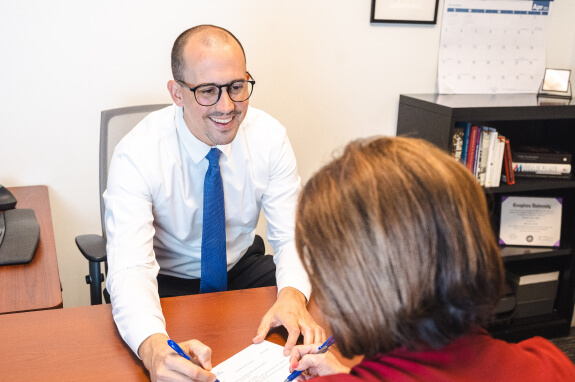Financial Planning
Benefits of Financial Planning
Clarity
Gain clarity and peace of mind around your finances.
Reduce Stress
Don’t lose sleep over your finances.
Confidence
Gain new confidence in your financial future.
What is Financial Planning?
Certified Financial Planners take into account several components when building a financial plan including budgeting, investments, taxes, and the 13 wealth management topics. The goal is to generate a simplified roadmap that works through each stage of your financial life and accomplishes your goals on your timeline. The result is your peace of mind which allows you to spend your time and energy on what you really love.

How Farnam Financial Approaches Financial Planning
Our process for financial planning is simple.
Discovery Meeting
First, we conduct a discovery meeting to understand your goals, objectives, preferences, and your family dynamics.
Planning
Second, we provide a plan, written in plain English, that offers specific recommendations for each goal that you have – however large or small it is. We want to help you make informed decisions so we’ll always explain the why behind our thinking as well as the pros and cons. You’re always able to adjust the plan as needed. Our goal is to help you achieve your goals in a way that works for you.
The plan we provide may cover several wealth management topics that are important for you including:
- Building a budget that works for you
- Investments – covering both your overall allocation and specific investments
- Retirement planning – including what retirement account types to use and how much to contribute
- Creating a debt management plan that explains which debts to pay down first and how much each month
- Saving for education including what account types to use, how much to contribute, and how to invest it.
- A plan for incapacity – knowing how you’ll fund a future long-term event whether it’s in-home care, assisted living, or other services.
- A plan for insurance coverage – discovering if there are any gaps in coverage if you have too much coverage, and ensuring you’re paying a fair price.
Putting the Plan Into Action
Third, we’ll put your plan into action. We are eager to help you accomplish action items in any way we can and act as a collaborative partner. We promise to be supportive, keep in contact, and hold ourselves to anything we can control.

Meeting with a Certified Financial Planner®
Here are the few things you can expect when meeting with a CFP: First, an engaging discussion about your goals, concerns, preferences, and current finances including income, expenses, assets, and debts. This meeting can occur over the phone, via video chat, or in person at your convenience. You should expect your financial planner to come to know your finances just as well as you do, which may be a strange feeling at first. Second, you can expect a set of recommendations written in plain English that have your best interest first. You take comfort in this because fee-only financial planners never sell products and never charge commissions which minimizes their conflicts of interest. Finally, you can hold them to a fiduciary standard at all times.
Frequently Asked Questions
2 hours. The first hour is spent on the initial discovery. The second hour is our delivery meeting where we explain the plan, answer your questions, and listen to your feedback.
We’ve found that individuals who aren’t sure what kind of portfolio returns they need to achieve goals attempt to resolve this uncertainty (sometimes subconsciously) by reaching for the maximum possible return – including risky investments they otherwise wouldn’t make.
Case in point: a prospective client once came to us asking for an aggressive growth strategy that would include investments in Artificial Intelligence, Cryptocurrency, 5G, and Marijuana stocks. He simply didn’t know how much profit his portfolio needed to make to cover his expenses. Through the financial planning process, we found he needed a mere 2.1% withdrawal rate and he could satisfy this requirement with a conservative bond portfolio. He was both shocked and pleased with that news.
A plan can clearly answer, “How much portfolio return do I need to reach my goals, and how do I achieve that return?”
We have found that 13 wealth management issues that are critical for you to achieve success through each phase of your financial life. We aim to provide value in each area that is important for you, including topics such as retirement planning, estate planning, educational and family support, insurance planning, planning for incapacity, charitable giving, and more. While we’re not tax preparers or estate attorneys, we can have constructive conversations and coordinate or refer to those professionals as needed.
Get in Touch Today
Contact one of our fiduciary financial planners today to learn how we can help you meet your financial goals.
